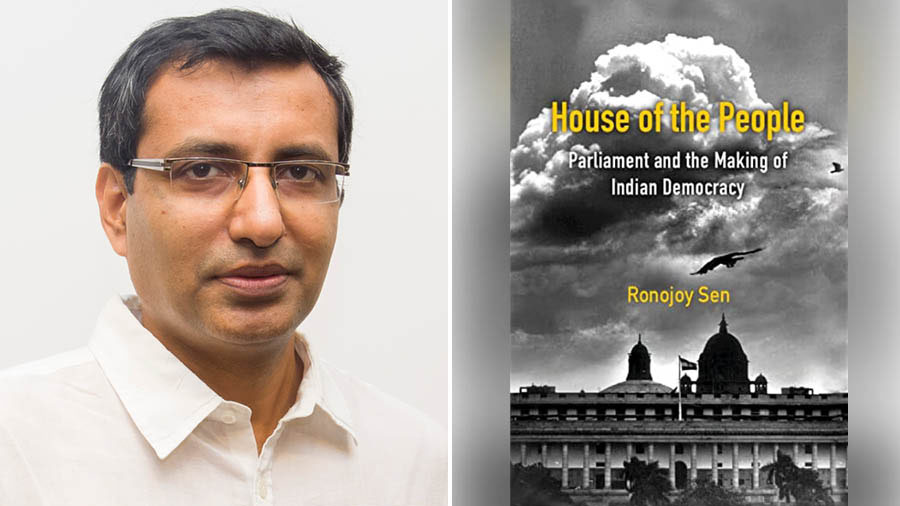Six months. Two years. Six years. At most, a decade. These were some of the predictions by Western historians and journalists on how long India’s democracy would survive when it gained independence from British rule in 1947. Standing in 2022, Indian democracy has lasted for 75 years. At the centre of this has been the Parliament, which has served as the embodiment of the collective will of the nation. House of the People, a new book by academician Ronojoy Sen, analyses how Parliament came into being, where it stands today and what could possibly happen to its role in the time to come.
While on a break from his research work at the National University of Singapore, My Kolkata caught up with Sen at a chatty cafe in Golpark (not noisier than Parliament, though) to delve deeper into how he views the evolution of Indian democracy through one of its most crucial and cherished institutions. Edited excerpts from the conversation follow.
Before we come to your book, let us touch upon Kolkata. As someone who was born and brought up in Kolkata and keeps coming back to the city every year, how would you say the Kolkata of today has changed from that of your formative years?
Ronojoy Sen: I was born and brought up in Golpark, opposite the Ramakrishna Mission. Till date, it’s where I stay whenever I come back to the city. While I was in school at St. Xavier’s during the late ’70s to late ’80s, and then in college at Presidency, it was the peak years of the Left Front in Bengal. Physically, culturally, and of course, politically, it was impossible to visualise a Left-free Bengal. But that has become a reality today, even though the political ethos may not have changed a lot, given so many of the cadres switched from the Left to the Trinamool Congress (TMC).
In terms of infrastructure, roads and the look and the feel of the city, Kolkata has certainly changed for the better. Under the Left, there was a stasis, with Kolkata neglected and the emphasis being on rural Bengal. Under the TMC, things are moving forward somewhat and there’s more of a focus on Kolkata. This means that the city is now better connected, cleaner and better equipped. Even this particular part of town in Golpark has had quite the makeover with a mushrooming of cafes. Earlier, we only had tea stalls and some roadside eateries, with the closest restaurant probably being Kwality in Ballygunge. But it’s good to see more spaces coming up that allow people to engage and mingle.
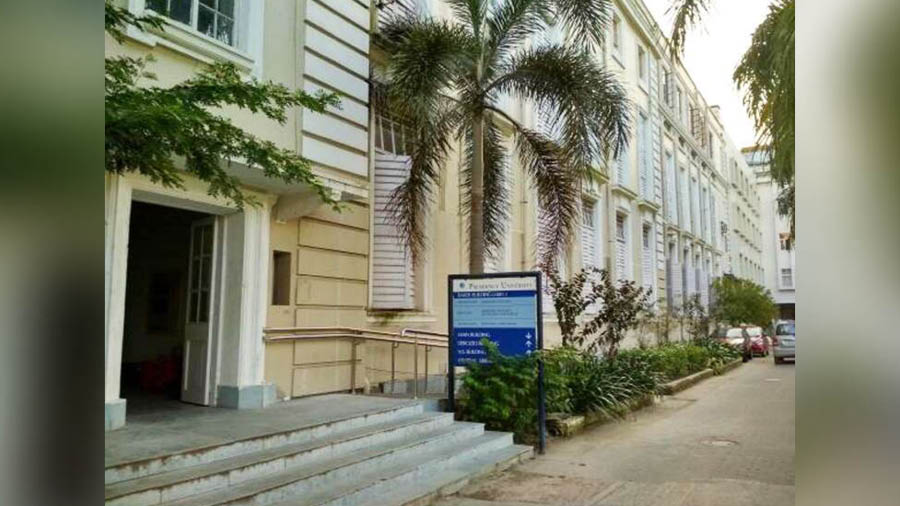
Sen was a student of history for three years at Presidency College TT Archives
How did your time at Presidency College shape you?
I spent three years at Presidency where I did my bachelor’s in history. The environment over there was more diverse than what I was used to in school at St. Xavier’s. I had very bright peers and a great set of professors, so the conversations were always enriching. Even though there was an expectation to do well in exams and to pursue erudition, I felt I learnt more outside the classroom at Presidency. Particularly in terms of developing a political consciousness. While the academic rigour and inspiration for research came from the classroom, there was also a global, cosmopolitan outlook that Presidency cultivated in me and my peers at a time when Kolkata and Bengal had become inward looking. The popular joke on campus was that if something happens in Nicaragua, there’ll be a signature campaign at Presidency. But the breadth of discussion and interest wasn’t just limited to politics. It was also there for literature and music.
The similarities between Parliament and India’s men’s cricket team
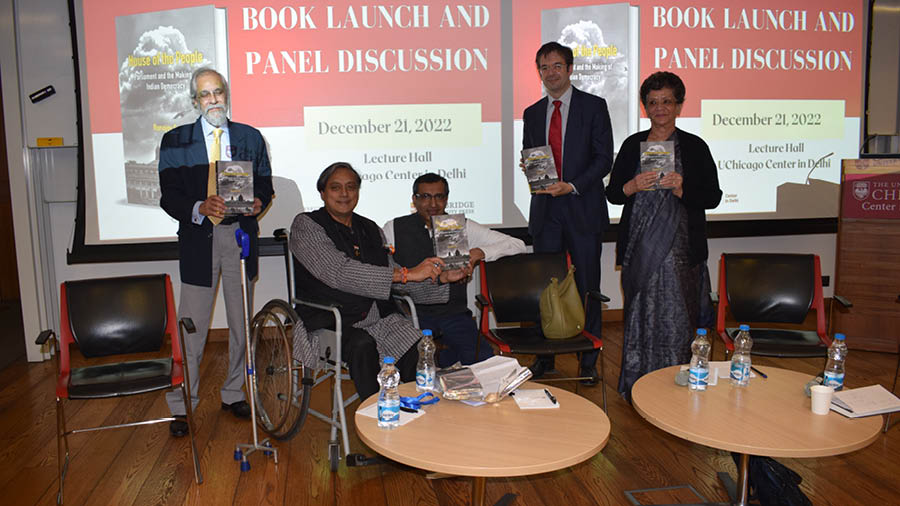
L-R: Justice Madan Lokur, Shashi Tharoor, Ronojoy Sen, Alex Travelli and Neera Chandhoke at the launch of ‘House of the People’ in Delhi Image courtesy Ronojoy Sen
Prior to writing House of the People, you had authored a book on Indian sport (Nation at Play, 2015) and another on religion in India, as seen from a judicial standpoint (Articles of Faith, 2010). Even though all three books address different aspects of Indian society, politics and culture, did you find any overlapping threads connecting them that can say something about the India we inhabit today?
Articles of Faith and House of the People have only one overlap in that they both talk about institutions (the judiciary in the former and the Parliament in the latter). But there are quite a few parallels between House and Nation at Play, even though their research processes and subject matters are different. This is because, since the 1990s, there has been a roughly simultaneous shift in the culture of both the Parliament and the Indian men’s cricket team. Both have become more diverse and disruptive, even aggressive. For several decades, Parliament used to be dominated by lawyers and people from the upper castes. That started changing after the implementation of the Mandal Commission’s recommendations. Similarly, Indian cricket, which used to be the bastion of Brahmins and upper caste players from metro cities, opened its doors to a much wider India that saw talents like Virender Sehwag and Mahendra Singh Dhoni emerge. In both cases, the decorum and the rules of the game changed. Be it parliamentary procedure or the spirit of cricket, we started seeing reflections of a different India that no longer believed in a consensus of having just one way of doing things.
Considering the enormous challenge of representing a country as vast and as diverse as India, would you say that the Lok Sabha has done, till date, an impressive job in executing its role as the House of the People?
We have a lot to be proud of in terms of how the Lok Sabha, and Parliament in general, has inherited and carried forward our system of democracy from the British. But even more than that, what was remarkable about India was how quickly we adopted the Universal Adult Franchise, something that was unheard of in the middle of the 20th century for other developing countries. That should also be a source of pride.
‘Muscle power and money have an outsized influence in Indian politics’
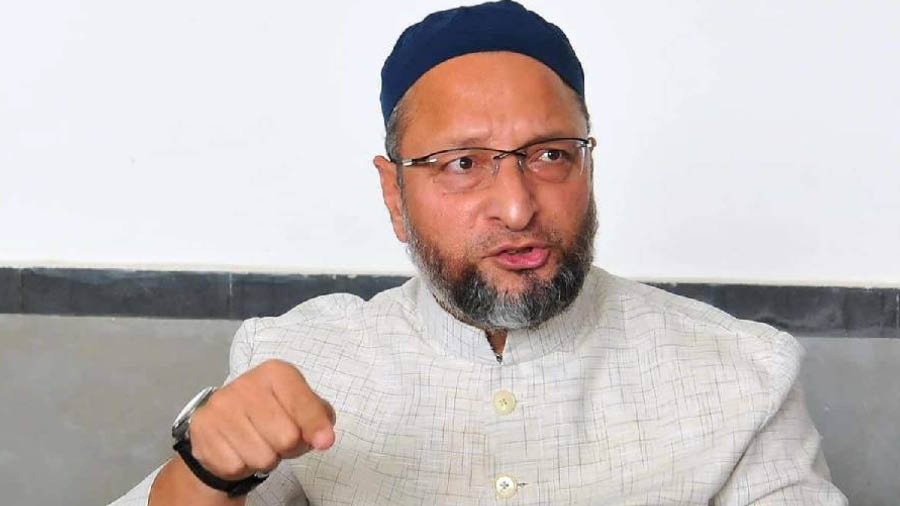
Asauddin Owaisi was one of 27 Muslim MPs to be elected to the Lok Sabha in 2019, with not even one coming from the Bharatiya Janata Party (BJP) TT Archives
The Lok Sabha is an imperfect representation of India’s composition. For example, it has only 5 per cent of Muslims, while the country’s population has 14 per cent. Numbers are similarly disproportionate for women. What are the demographic trends in terms of representation in the present Lok Sabha that worry you the most?
All these trends do concern me. Even with caste, there are concerns. While representation across castes is much higher nowadays, a lot of that comes from Other Backward Classes (OBCs), many of whom come from privileged backgrounds and constitute what the Supreme Court has called the “creamy layer”. But with Muslims and women, it’s far worse. Perhaps the right-wing Hindutva shift is responsible for the dwindling representation of Muslims. A large minority having such a small voice in Parliament isn’t healthy for a democracy.
For the representation of women, it’s quite ironic that a country that produced a female Prime Minister as early as 1966, and where women and men turn out to vote almost equally, there’s still massive gender disparity in Parliament. Representation of women in the Indian Parliament is lower than the global average but also lower than what we see in countries like Bangladesh and Pakistan, which have reservations for women. Even if we don’t introduce reservations in Parliament, political parties can have their own quotas for women candidates, as the likes of the Biju Janata Dal (BJD) and the TMC have done in the past.
The other concern is how many MPs have been accused of criminality. More than 40 per cent, actually, which is very hard to process, especially for those outside India. However, in a perverse way, studies have shown that voters don’t seem to care much. Muscle power and money have an outsized influence in Indian politics, which is also what prevents better and more diverse representation across categories, with the rich and/or the dynasts, who already have established political networks, finding it much easier to contest elections.
Should India’s delimitation exercise result in the redistribution of Lok Sabha seats after 2026, North India is expected to gain more than 30 seats in the Lok Sabha whereas South India could lose more than 20. How problematic could that be for Indian democracy?
It’s something to be worried about, although it’s hard to predict exactly how it’ll play out, assuming the delimitation does happen. Effectively, it means rewarding certain states (in North India) for higher population growth and penalising the southern states for effective population control. It could lead to a more North-centric political culture in India, something that’s already creeping in. And it might also affect India’s so-called quasi-federal status, which can lead to more issues down the line. Having said that, Opposition politicians are already raising their concerns about this, and I’m hopeful that the Southern states won’t give away their say in the Lok Sabha so easily.
‘Modi prefers to bypass political institutions and speak directly to the people’
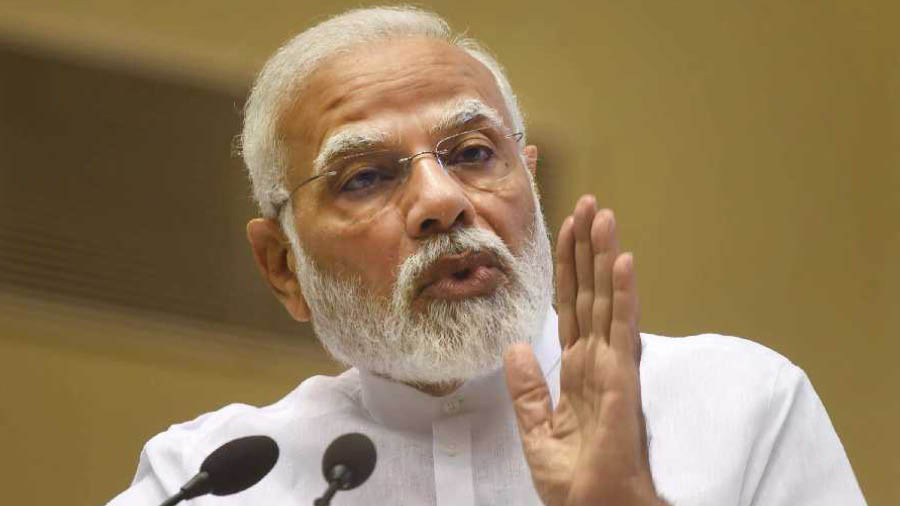
Narendra Modi does not like to be questioned, feels Sen
Unlike Atal Bihari Vajpayee, Parliament or the Lok Sabha does not seem to be Narendra Modi’s preferred arena for speeches, debates or discussions. What do you make of Modi’s performance in the Lok Sabha as Prime Minister?
Modi isn’t someone who likes to communicate through the Parliament. Even when he was Chief Minister of Gujarat, the performance of the state Assembly in terms of number of sittings and legislations was poor. Like other populist leaders such as Vladimir Putin and Viktor Orban, Modi prefers to bypass political institutions and speak directly to the people. As Prime Minister, Jawaharlal Nehru was always present in Parliament, even during his most challenging days during the war with China. Atal Bihari Vajpayee, someone groomed in the culture of Parliament, was far more inclined to engage in parliamentary procedure. But Modi, who is perceived as a political outsider, seems to have a disdain for all this, so much so that he’s actually spoken far less than his predecessor, Manmohan Singh, someone who was mocked for not speaking enough.
Should India emulate the British in introducing a Question Hour every week where attendance and responses by the PM are compulsory?
I’d be in favour of that. It would at least create some opportunity for the PM to be questioned.
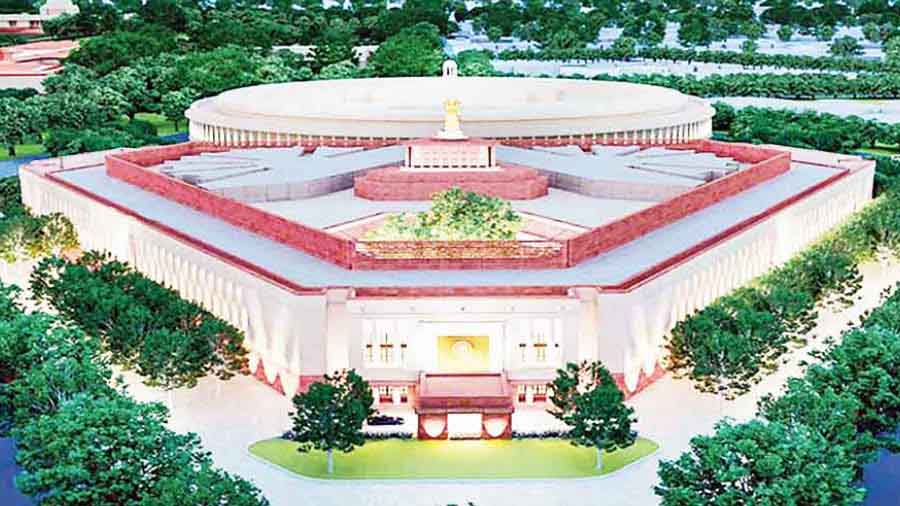
Sen believes that India has not been able to create the level of institutional autonomy that a thriving democracy needs TT Archives
The Central Vista Project seems set to transform the look and feel of Parliament in a few years’ time. But does the Parliament also need a spiritual makeover?
Without a doubt. Elections have become a glamorous part of our democracy, but very few are interested in looking at the system of politics and governance when there are no elections. India must pay more attention to what’s happening between elections, or we risk becoming an “electocracy”, to borrow a phrase from Yogendra Yadav. We haven’t been able to create the level of institutional autonomy that a thriving democracy needs. When India became independent, the UK’s Manchester Guardian called it a “beacon of democracy”. I doubt anybody would be calling us that these days. Our institutions, including Parliament, were never perfect, but their flaws have become more accentuated since 2014.
Lastly, have you started working on your next book already?
Yes, I have. My next book will be about tracing the intellectual history of the Hindu nationalist project in India. It’s an attempt to understand where the Hindutva idea of India stems from, and in doing so, I’ll be looking closely at the role of Bengal as well as several personalities connected to and/or appropriated by the Hindutva establishment, from Swami Vivekananda to Shyama Prasad Mukherjee to Deendayal Upadhyay, among others.
